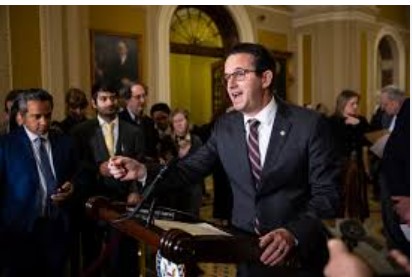In a controversial move that has sparked concern among educators, parents, and policymakers, the White House is reportedly considering significant cuts to education funding as part of its next federal funding clawback initiative. This strategy, aimed at reducing the federal deficit and repurposing unspent or “underutilized” COVID-19 relief funds, has drawn sharp criticism for targeting a sector that is still reeling from the impacts of the pandemic.
The proposed cuts are part of a broader effort to reclaim federal dollars across multiple agencies. While the administration argues that the goal is to reallocate unused pandemic-era funds to higher-priority national needs, education advocates fear that stripping funds from schools could set back student achievement and widen the opportunity gap.
The Clawback Strategy Explained
The term “clawback” refers to the process by which the federal government retrieves funds that have been allocated but not yet spent by state or local agencies. In this context, the White House is reviewing funding allocated during the pandemic through bills like the American Rescue Plan (ARP) and the Coronavirus Aid, Relief, and Economic Security (CARES) Act.
Initial reports suggest that the administration is eyeing billions in unspent education funds, particularly from the Elementary and Secondary School Emergency Relief (ESSER) funds. Many school districts have struggled to spend these funds quickly due to procurement delays, staffing shortages, and bureaucratic hurdles.
The Office of Management and Budget (OMB) has already begun auditing fund usage across states, with plans to release a final recommendation by the end of the fiscal quarter. While not all education funds will be rescinded, the focus appears to be on reallocating portions deemed “excessive” or “unobligated” for other fiscal priorities, such as defense, infrastructure, and deficit reduction.
Impacts on Public Education
Education leaders across the country are sounding the alarm, arguing that clawing back funds now would be both premature and harmful. Many schools are still in the process of implementing long-term recovery strategies using those funds—such as hiring mental health counselors, expanding afterschool tutoring programs, and upgrading ventilation systems to improve air quality.
According to the School Superintendents Association (AASA), some districts have planned their budgets based on a multi-year timeline for utilizing federal relief funds. Removing those funds midstream, they warn, could derail critical student support services and force layoffs of newly hired staff.
In rural and underfunded districts, the potential cuts could be devastating. “This would be a betrayal of promises made to America’s students during the darkest days of the pandemic,” said Becky Pringle, president of the National Education Association. “Our schools were told help was on the way—and now that lifeline is being pulled back before it’s fully delivered.”
Political Ramifications
The clawback proposal comes at a politically sensitive time. With the 2026 midterm elections on the horizon, education funding has become a flashpoint for both parties. While fiscal conservatives applaud the administration’s intent to rein in spending, progressive lawmakers and civil rights groups argue that cutting education—especially for disadvantaged communities—sends the wrong message.
Senator Elizabeth Warren (D-MA) has already issued a public statement opposing the plan, calling it “fiscally short-sighted and morally wrong.” Meanwhile, Republicans in the House have shown cautious support for the idea, framing it as a way to reduce “wasteful spending” and hold school systems accountable for unused resources.
Behind the scenes, negotiations are underway in Congress to determine which sectors will face the deepest cuts. Some lawmakers are pushing for targeted clawbacks rather than broad rescissions, emphasizing the need to protect programs directly tied to student learning and mental health.
School Districts on the Defensive
Many school districts are now scrambling to obligate their remaining funds before any rescission order takes effect. Some are accelerating timelines for facility upgrades, technology purchases, and curriculum reforms, fearing that any delay could cost them crucial dollars.
Administrators say they are being unfairly penalized for cautious, responsible spending. “We have been deliberate because we wanted to use the funds wisely—not just throw money at short-term fixes,” said Dr. Miguel Cardona, Secretary of Education. “Taking these funds back punishes good planning and undermines long-term recovery.”
The Department of Education has issued guidance to districts urging them to document their spending plans and provide clear justifications for any remaining unspent funds. This documentation could be key in determining which districts are allowed to keep their allocations.
Broader Economic and Social Context
The proposed education cuts are part of a larger national debate over how to address post-pandemic economic instability. Inflation, rising national debt, and growing demands for infrastructure investment are putting pressure on the federal budget. In this context, unspent education funds are seen by some as low-hanging fruit.
However, education experts argue that cutting school funding now would be counterproductive in the long run. A report from the Economic Policy Institute found that sustained investment in education yields high returns in workforce development, crime reduction, and economic productivity.
Moreover, student learning loss from the pandemic remains a pressing challenge. National test scores have shown declines in math and reading proficiency, especially among low-income and minority students. Experts warn that clawing back funds could stall or reverse the fragile progress schools have made in addressing those gaps.
Conclusion: A Battle Over Priorities
As the White House prepares its next funding clawback package, the inclusion of education cuts is shaping up to be one of the most contentious elements. Supporters argue that reallocating unused funds is a responsible budgetary move; critics see it as a step backward in the nation’s commitment to public education.
The outcome will depend not only on fiscal analysis but also on political negotiation and public pressure. With educators, parents, and advocates already mobilizing, the administration may face intense scrutiny over how—and where—it chooses to tighten the belt.
In a post-pandemic world still struggling to find stability, this debate is more than just a budgeting exercise. It is a test of national values and priorities—one that will shape the future of education for millions of American students.
Ask ChatGPT
